Dock worker and divorced dad Ray has custody of his children for the weekend when a tumultuous thunderstorm brings with it more than inclement weather. In Cruise’s second collaboration with Spielberg, a dark and richly rewarding adaptation of H. G. Wells’ novel, he grippingly conveys the confusion of a flawed but determined everyman, attempting to reconnect with his children in the most terrifying conditions.
SPOILER WARNING The following notes give away some of the plot.
A contemporary review
In 1976 Philip Strick wrote: ‘War of the Worlds deserves to be remade, many times.’ And so far HG Wells’ 1898 novel has inspired Orson Welles’ 1938 Halloween radio broadcast, the George Pal/Byron Haskin 1953 film (which, Strick observed, ‘deserves to be remembered with affection’), Jeff Wayne’s 1977 concept album, Howard Waldrop’s short story ‘Night of the Cooters’ and various depictions of the Martians and their war machines, ranging from the original illustrations accompanying Wells’ text in Pearson’s Magazine to a commemorative statue in Woking – the scene of the alien landings in the novel. Surprisingly, Spielberg’s version is only the second film adaptation, though directors as diverse as Cecil B. DeMille, Sergei Eisenstein and Alfred Hitchcock were tempted by the material. It seems that one reason it has taken so long for any new War of the Worlds film to get made is that Wells’ material has so completely been absorbed into the SF genre that there hardly seemed any point. Independence Day and Mars Attacks! are already modernised, American takes, and they both have an oddly retro feel, looking back not to 1898 but 1953 as if Pal’s film, with its manta-ray-like floating machines, had completely overwritten the still vivid, still pertinent book.
Given that Spielberg was responsible for Hook (1991) and made a film called The Lost World (1997) as if he’d never heard of Arthur Conan Doyle, there was some trepidation from Wellsians who really want a faithful big-budget adaptation in period and set in England. As Strick indicated 30 years ago, that film still needs to be made. But while Spielberg’s version, scripted by David Koepp, would be hard-pressed to stir anyone to misty affection in the way the 1953 film does (you can tell Spielberg feels that tug himself because Gene Barry and Ann Robinson, Pal’s stars, have wordless cameos), it is nevertheless excellent, thoughtful, often sobering and terrifying.
Koepp wrote and directed The Trigger Effect (1996), an underrated film about the collapse of suburban society after a power breakdown, and draws on that material here, with people milling about after the shock of the aliens’ violent intervention wondering what’s going on (‘Is it terrorists?’) and swiftly turning into a self-destructive mob. Casting around widely for influences, the filmmakers have tipped in adapted elements from Shaun of the Dead (news broadcasts ignored), 28 Days Later (the wall of messages, snapshots and pleas) and even Michael Haneke’s Time of the Wolf (though here the last train after the end of civilisation arrives on fire). However, Spielberg and Koepp wisely go back to the source and seize with gratitude on scenes and images Wells left as a gift to an art form that was barely-born when he was writing: at last, the tripods walk in credible fashion and the disintegrating ray strikes crowds like a blast of insecticide (empty clothes flutter like leaves), tentacles drag screaming victims up to the ship for exsanguination, and the red weed grows over the countryside to make it into an unhealthy alien landscape.
The Wells novel is a difficult adapt in that it is like a compilation of personal experiences and second-hand news items, with a nameless narrator whose only plot function is to be there. Spielberg allows Tom Cruise’s everyguy leading man to be part of a late group effort that shows the invaders (not, apparently, from Mars) are vulnerable, but is otherwise at a loss for a course of action in a way that’s peculiarly disturbing for such a punch-the-air movie star. This is a return to the Spielbergian hero of the 1970s: Dennis Weaver in Duel, Roy Scheider in Jaws or Richard Dreyfuss in Close Encounters of the Third Kind – men who are uncomfortable in credibly fractured families and as drawn to unknowable monsters as they are terrified of them. Ray loses his son Robbie because the boy is compelled to rush over a ridge to see a battle, while he – responsible to his daughter, but understanding the temptation – rushes to hide in a cellar with Tim Robbins’ unstable survivalist, Ogilvy.
The film delivers on spectacle, from the jarring initial appearance of an alien tripod breaking up through tarmac to the collapse of the war machines in post-holocaust Boston. But it is also as prone to duck and hide with the hero, who is nagged by his panicky daughter to pay attention close to home. The big story takes place where we don’t see it, as if other alien invasion movies have shown us enough presidents, generals and scientific advisers to suffice. Only towards the end does the mandatory uplift creep in, with Robbie’s illogical survival and hugs all round that seem to negate the indication that Ray’s traumatic experiences, which include becoming a murderer, have permanently affected him.
Of course, this is an invasion informed by 9/11, especially when Ray wakes up to find an airliner crashed in the street outside. However, Wells was not, like his predecessor Sir George Tomkyns Chesney in The Battle of Dorking, trying to rouse a complacent British military establishment and the general public against the dangers of, say, Prussian militarism. For Wells, the Martians aren’t alien to the British empire but an epitome of it, treating humanity just as westerners treated the Tasmanians or the Aztecs. This is why the invaders are undone by the equivalent of the tropical fevers that led many a white imperialist to a foreign grave. Remarkably, in the current political climate, Spielberg adopts an equivalent approach: the only patriotic statements about the invaders’ trespass on ‘the greatest country on earth’ come from the crazed Ogilvy; and the US army trundles past doomed civilians taking barely any interest in them. If Wells’ Martians echo European imperialists in far-flung corners of the globe, then Spielberg’s invaders – in their carapace-like machines, ignoring the native peoples except to imprison them and subject them to meaningless privations, so incapable of understanding the climate of the land they have conquered that a plan brewing for ‘a million years’ is undone because they didn’t take elementary precautions against disease – stand less for al-Qaeda or Saddam Hussein than for George W. Bush’s America at work in Iraq, Afghanistan or Guantanamo Bay. In this light, a teaser tagline is especially telling: ‘They’re here already.’
Kim Newman, Sight and Sound, September 2005
War of the Worlds
Director: Steven Spielberg
©/Presented by: Paramount Pictures, DreamWorks Pictures
Production Companies: Amblin Entertainment, Cruise/Wagner Productions
Executive Producer: Paula Wagner
Produced by: Kathleen Kennedy, Colin Wilson
Unit Production Managers: David Witz, Jonathan Filley
Production Supervisor: Jason McGatlin
Production Co-ordinator: Candice Campos
Location Manager: Colleen Hilary Gibbons
Post-production Executives: Martin Cohen, Stephanie Ito
Post-production Co-ordinator: Samantha Becker
1st Assistant Director: Adam Somner
Script Supervisor: Ana Maria Quintana
Casting: Debra Zane, Terri Taylor
Screenplay: Josh Friedman, David Koepp
Based on the novel by: H.G. Wells
Director of Photography: Janusz Kaminski
Camera Operators: Mitch Dubin, George Billinger
Still Photographer_s: Andrew Cooper, Frank Masi
_Senior Visual Effects Supervisor: Dennis Muren
Visual Effects Supervisor: Pablo Helman
Special Visual Effects: Industrial Light & Magic
Special Effects Model Maker Forepersons: Damacio Cortez Jr, Jeff Frost
Model Makers: Ron Mendell, Gregory Jein
Animation: Industrial Light & Magic
Edited by: Michael Kahn
1st Assistant Editor: Patrick Crane
Assistant Editors: Sam Seig, Mike Cuevas, Mike Wilson, Mark Gillard, Craig Hayes
Production Designer: Rick Carter
Supervising Art Director: Tony Fanning
Art Directors: Douglas Meerdink, Andrew Menzies, Norman Newberry, Tom Warren
Set Designers: Kevin Cross, Billy Hunter, Aric Cheng, Scott Herbertson, Roy Barnes
Set Decorator: Anne Kuljian
Concept Illustrators: James Clyne, Christopher Baker
Concept Design: Doug Chiang, IceBlink Studios
Storyboard Artist: David Lowery
Property Masters: Doug Harlocker, Peter Gelfman
Construction Co-ordinator: John V. Villarino
Costume Designer: Joanna Johnston
Assistant Costume Designer: Robert Wojewodski
Make-up Department Head: Lois Burwell
Key Make-up: Kenneth R. Myers
Make-up Artists: Leo Corey Castellano, Tina Harrelson
Prosthetics Fabrication: Joel Harlow, Rob Hinderstein
Hair Department Head: Kathryn Blondell
Key Hairstylist: Audrey L. Anzures
Main/End Title Design: The Picture Mill
Music: John Williams
Chorus: The Hollywood Film Chorale
Orchestrations: Conrad Pope, Eddie Karam
Sound Design: Richard King, Michael Babcock, Aaron Glascock
Additional Sound Design/Editing: Hamilton Sterling, Randy Thom
Sound Mixer: Ronald Judkins
Boom Operators: Robert Jackson, Dan Rosenblum
Re-recording Mixers: Andy Nelson, Anna Behlmer
Recordists: Craig ‘Pup’ Heath, Matt Patterson, Denis St. Amand
Supervising Sound Editor: Richard King
Sound Editor: Richard Hymns
Dialogue Editors: Hugo Weng, Michael Magill
Sound Effects Recordists: John Paul Fasal, Eric Potter
Sound Effects Editors: Michael W. Mitchell, Piero Mura
ADR Supervisor: R.J. Kizer
Foley Supervisor: Christopher Flick
Stunt Co-ordinator: Vic Armstrong, Captain Troy Waters
Military Technical Advisers: Major Joseph Todd Breasseale
Senior Researcher: Jessica Biggins
Researcher: Stephen Christensen
Dolby Sound Consultant: Jim Wright
Cast
Tom Cruise (Ray Ferrier)
Dakota Fanning (Rachel)
Miranda Otto (Mary Ann)
Justin Chatwin (Robbie)
Tim Robbins (Harlan Ogilvy)
Rick Gonzalez (Vincent)
Yul Vázquez (Julio)
Lenny Venito (Manny the mechanic)
Lisa Ann Walter (bartender)
Ann Robinson (grandmother)
Gene Barry (grandfather)
David Alan Basche (Tim)
Roz Abrams (herself)
Michael Brownlee (TV reporter, Osaka)
Camillia Sanes (news producer)
Marlon Young (news cameraman)
John Eddins (news van driver)
Peter Gerety (hatch boss, load manager)
David Harbour (dock worker)
Miguel Antonio Ferrer (Brazilian neighbour)
January Lavoy (Brazilian neighbour’s wife)
Stephen Gevedon (neighbour with lawnmower)
Julie White (woman)
Marianni Ebert (hysterical woman)
Rafael Sardina (mechanic’s assistant)
Amy Ryan (neighbour with toddler)
Ed Vassallo, Michael Arthur (intersection guys)
Danny Hoch (intersection guy cop)
Sharrieff Pugh (man studying street)
Erika Lavonn, Christopher Evan Welch (photographers)
John Michael Bolger, Omar Jermaine (men holding women)
Morgan Freeman (narration)
USA 2005©
116 mins
35mm
SIGHT AND SOUND
Never miss an issue with Sight and Sound, the BFI’s internationally renowned film magazine. Subscribe from just £25*
*Price based on a 6-month print subscription (UK only). More info: sightandsoundsubs.bfi.org.uk

BFI SOUTHBANK
Welcome to the home of great film and TV, with three cinemas and a studio, a world-class library, regular exhibitions and a pioneering Mediatheque with 1000s of free titles for you to explore. Browse special-edition merchandise in the BFI Shop.We're also pleased to offer you a unique new space, the BFI Riverfront – with unrivalled riverside views of Waterloo Bridge and beyond, a delicious seasonal menu, plus a stylish balcony bar for cocktails or special events. Come and enjoy a pre-cinema dinner or a drink on the balcony as the sun goes down.
BECOME A BFI MEMBER
Enjoy a great package of film benefits including priority booking at BFI Southbank and BFI Festivals. Join today at bfi.org.uk/join
BFI PLAYER
We are always open online on BFI Player where you can watch the best new, cult & classic cinema on demand. Showcasing hand-picked landmark British and independent titles, films are available to watch in three distinct ways: Subscription, Rentals & Free to view.
See something different today on player.bfi.org.uk
Join the BFI mailing list for regular programme updates. Not yet registered? Create a new account at www.bfi.org.uk/signup
Programme notes and credits compiled by Sight and Sound and the BFI Documentation Unit
Notes may be edited or abridged
Questions/comments? Contact the Programme Notes team by email

